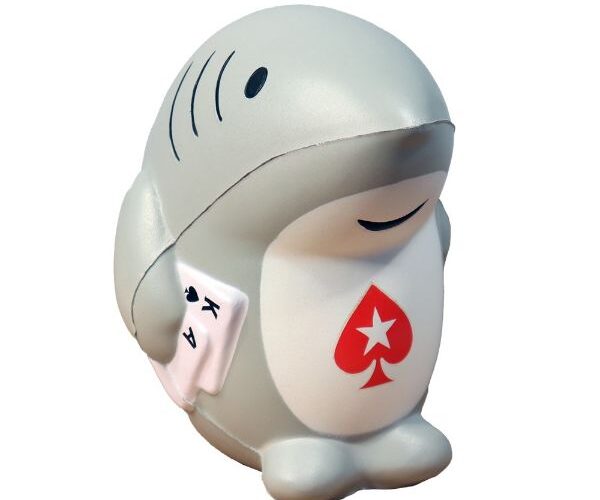Bounty Builder Series starts later this month, with $25 million guaranteed over 15 days of competition.
And while it might sound like any other only poker series on PokerStars, Bounty Builder is different. And the reason for that is simple.
It’s not just about how far your progress. It’s about who you knock out along the way.
Bounty Builder Series is played using a Progressive KO format. And you’ll find plenty here to guide you through the complete series of events.
But if you’re looking for more details about Knock Out poker in general, then you’re in the right place.
So, if you have plans to take part in Bounty Builder Series, are thinking about trying KO tournaments, or are just naturally curious, this post will provide you with a complete breakdown of everything you need to know.
Things like…
- A simple to follow explainer of how bounty builder series events work.
- The difference between KO, PKO and TKO tournaments?
- How to get your head around the mathematics of winning bounties
- Top tips on how to get the most out of Bounty Builder Series events
- How to improve your PKO results in about 30 minutes.
- A handy list of players to target and players to avoid
And…
- Five reasons, picked by our resident expert, why you should play Progressive KO tournaments
Ready to get started? Let’s begin.
What are Bounty Builder events (and why should you play them)?
The concept is simple.
When you buy in and take a seat, you start the tournament with a bounty hanging over your head.
If you knockout a player and you instantly win half of that player’s bounty. This is yours to keep no matter what.
The other half of their bounty gets added to your own bounty total. That means the more opponents you knock out, the bigger your own bounty becomes.
It sounds simple, doesn’t it? And it is. But it does make this a unique format. And one that requires a few tweaks when it comes to strategy and how best to play a KO event.
For instance…
- If you knock out the right players, you can make a profit on your original buy in without getting close to the tournament money bubble.
- It means your strategy might change when facing a player all in, with a big bounty on their head.
- It means your own strategy needs to change depending on the size of your own bounty.
See how it might get complicated?
Well, don’t worry about that for now. We’ll get to how to play bit a little later.
For now, you have the basics.
Find out more: How Bounty Builder events work and why you should play them.
That leads on to the next question…
What’s the difference between KO, PKO and TKO poker?
This is one of those important detail to get right before you jump into Bounty Builder Series.
While KO events can appear very similar, there are important differences between Progressive Knockout (PKO) tournaments, and Progressive Total Knockout (TKO) tournaments.
The differences might be small. But if it could make a big difference to your Bounty Builder Series campaign, it’s worth getting up to speed.
The easiest way to get a quick rundown on the differences is to check out our article, complete with very helpful pictures, that explains the differences between KO, PKO and TKO tournaments.
But the quick overview goes like this.
Knockout Tournament (KO)
In these events your total buy-in is divided into two portions. Each portion goes to a separate section of the prize pool.
One portion (usually the largest one) goes into the regular prize pool. That’s paid to the top finishers in the event, just as you’d expect in any regular tournament you might play.
The second portion goes straight into the bounty prize pool.

Here’s what happens when you knock out a player
Progressive Knockout Tournament (PKO)
A lot of what happens in a knockout (KO) tournament happens in a Progressive Knockout (PKO) tournament too. With a twist in how bounties are accumulated.
Remember: in a KO or a PKO tournament, one portion of a player’s buy-in goes into a prize pool, just it would in a “normal” tournament. The other portion goes into the bounty pool. Those amounts are usually half and half.
But here’s the interesting bit.
If you knock out an opponent in a PKO tournament, half of their bounty goes straight into your account as a cash prize. The other half is added to your bounty.
The more players you knock out, the more you win.
BUT… the bigger the target you become.
Find out more: What’s the difference between KO, PKO and TKO poker?
Getting to grips with the mathematics of bounties
That leads us on to the next stage. Doing the maths.
This can put off a lot of players. We may be poker players. But that doesn’t automatically make us maths geniuses.
It can get a little tricky working out what money goes where. Also, what that means in terms of odds and all-important equity.
Luckily, we’ve done all the complicated bit for you in our post about getting to grips with the mathematics of bounties.
You’ll find practical examples, all the sums, and even a simple way to remember it all while you’re in the middle of a game. Feel free to write it on the back of your hand.
As the article says, the moment you knock out a player their bounty is split between your bankroll and your own bounty.
Knowing how this changes the way you should play puts you ahead of those other players oblivious to the details.
“We have to aggressively try and knock out as many people as possible, and that means we have to crunch the equity numbers.”

The Maths of bounties
Find out more: Getting to grips with the mathematics of bounties
The 5 tips that will make you a better Bounty Builder player
Now that you know how Bounty Builder Series events work, you’ll want to know how to play them well. That’s what the next few sections will talk about.
As we said above, KO tournaments require a different approach to regular tournaments. It’s not simply a case of playing the same strategy you might use in a freezeout.
You have to be aware of your own situation as well as those players around you.
Our article 5 tips that will make you a better Bounty Builder player tackles this exact point.
In it we’ll take you step-by-step through the whole process.
Starting with the simple strategy of surviving (probably the single best plan in any tournament).

Sometimes it’s best to keep your head down
Then through to managing risk, when to go on the attack, and what to do when you have a big stack.
It finishes off with tips on when to deploy what we call the Fallen Giant strategy.
So whatever level you’re entering Bounty Builder Series, these 5 tips are a must.
Find out more: 5 tips that will make you a better Bounty Builder player
PKO Primer: Improve your Progressive Knockout tournament results in 30 minutes
Sometimes you don’t have a lot of time to read back on articles and information about what to do and when to do it.
Sometimes you just need a quick recap on KO strategy that you can go through without having to give up valuable playing time.
You probably want it to be impartial too.
So don’t take our word for it. Take the word of pro player Dara O’Kearney and journalist Barry Carter, who managed to condense everything there is to know about Progressive Knockout tournaments into their book PKO Poker Strategy.
Wait a minute, I hear you say. Didn’t you mention this was for people short on time?
Well, the book is excellent. But we also have an excerpt of the book that will help you improve your progressive knock out tournament results in about 30 minutes.

Read. Learn. Read again.
That’s about how long it takes to read.
This one section will teach you how to adapt your play to suit the types of players you’re up against.
You’ll get a few golden rules for playing bounty events.
Plus, a wise word about bluffing, along with the kind of hands hold up more than you might expect.
It’s an easy read, full of detail, and well worth your time. Spend a couple bounties on getting yourself a copy.
Find out more: Improve your progressive knock out tournament results in about 30 minutes.
KO Poker: The 5 players to target (and the 5 players targeting you)
You’re going to run into a huge variety of players and playing styles over the course of Bounty Builder Series. There are 196 tournaments over 15 days. It’s unavoidable.
That includes everyone from your typical maniac to those players pushing and hoping with a short stack.
It makes sense then to know exactly which type of player you should welcome to your table, and which you might want to be cautious around.
Put another way… which players can make you money and which will take yours?
We identified five different types of players for each of those categories.
Hers’ the first category.
- Short stacks,
- Players with enormous bounties,
- Loose players with short to medium stacks,
- Reckless players with big stacks and
- Weak players
And here’s the second category.
- Big stacks who have you covered
- Players with tiny bounties in marginal situations
- Tight players with a short to medium stack
- Loose big stacks against your marginal hand
- The pros.
If you hadn’t worked it out yet, the first group will increase your chances of making money. The second group could end up costing you.
But there’s more to it than that, as the article KO Poker: The 5 players to target (and the 5 players targeting you) explains.
Remember, there are dozens of variables to consider for each situation in poker. There’s no sure-fire rule. These are simply guidelines to get your up to date on various possibilities.
Find out more: KO Poker: The 5 players to target (and the 5 players targeting you)
5 reasons to try Progressive KO tournaments
Finally, one last effort to persuade anyone who might still be on the fence about KO tournaments.
If you’re curious but need a little more information about why you should play, the folks over at PokerStars Learn might be able to persuade you.
You can look around the PokerStars Blog, and PokerStars Learns for plenty of reasons to play. But PokerStars Learn got it down to five.
It’s not about the prize money, although the $25 million guaranteed will ensure some big payouts along the way…
It’s not just that you don’t have to make the money bubble to come away with prize money, although we think that’s one of the coolest things about Bounty events.
As they Pete Clarke of PokerStars Learn puts it,
“For tournament players, the grind can often feel like a volatile rollercoaster of long hours and little downtime. One type of tournament that will definitely spice up your poker calendar is the progressive knockout.”
So here they are.
- Reduced Variance
- A more eventful ride
- Empowerment
- An exhilarating late game
- Less painful bust outs
We admit it. We’ve always found that last one suits our playing styles perfectly.
Find out more: 5 reasons to try progressive KO poker tournaments.
Conclusion
So, there you have it.
Going through each of the steps above will help prepare you for a decent start to the series when it gets underway. And for KO tournaments in general whenever you play on PokerStars.
Remember, the series starts soon.
But if you follow the details in this article, you’ll now know…
- What you can expect in a Bounty Builder tournament.
- The different types of Bounty Builder Series events.
- How to make sure you play them to your best.
And that’s just a start.
There’s plenty more to discover about Bounty Builder Series and KO tournaments in general on the PokerStars Blog.
You’ll also find articles and tips galore about both on PokerStars Learn. We highly recommend checking them out, for this and all sorts of strategy help.
In the meantime, good luck to everyone taking part.
And whether you’re playing every day, or just watching from the Rail make sure you’re following us on Twitter @PokerStarsBlog to avoid missing the latest updates.
Here’s a quick recap on the links mentioned above…
- What are Bounty Builder events (and why should you play them)?
- What’s the difference between KO, PKO and TKO poker?
- Getting to grips with the mathematics of bounties
- The 5 tips that will make you a better Bounty Builder player
- PKO Primer: Improve your Progressive Knockout tournament results in 30 minutes
- The 5 players to target (and the 5 players targeting you)
- 5 reasons to try Progressive KO tournaments
- PokerStars Learn
Back to Top
View Other Blogs






























